The bit for gravel and soft rock has three parts. The little nubs are made of tungsten. The holes in the drill sections are for blowing air into the well. This pushes the debris out through the discharge pipe.
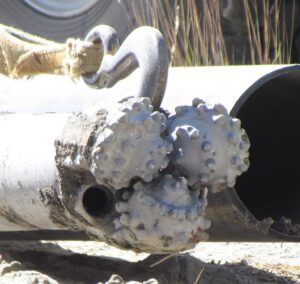
The bedrock bit is in one piece.
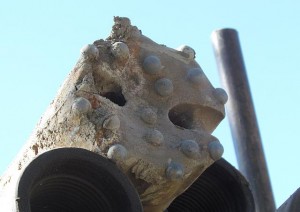
To change the bits, all the drill sections had to be lifted out, one by one, and laid on the ground, and then replaced one by one. This took a while. After that, progress was very slow and there was a lot of dust.
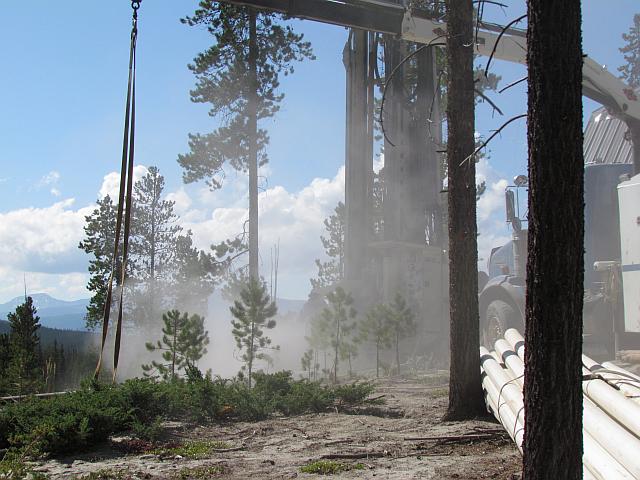
But then they were flushing the well with water again. Apparently, they had gone through the hard rock and were drilling through soft rock made of volcanic ash. Jerry figured this was good news as there were often fissures with water in this kind of rock layer: two weeks before, two wells had been drilled on the other side of Tatla Lake in this type of rock: one was at 110 feet with 15 gallons a minute, one was at 150 feet with 65 gallons a minute.
The single drill bit kept clogging up in this, so the drillers had to go through the lengthy process of changing the bit again. The good news was that, although the rock was soft, it needed no casing. This meant that each foot would be quite a bit cheaper.
Nothing much happened for a while. Lots of water was flushed through the bit to try and keep it moving. So when Jerry walked over to where Christine and I were sitting in the shade, and told us we had struck water, we had not seen the difference. “It’s only a dribble: about a pint a minute,” he said. Most people reckon 4 gallons a minute is the minimum required by a household. But Christine got just a pint: and she and her son (in separate houses) manage fine. This was at around 120 feet. So far the well was costing over $12,000. It was necessary to continue, though. Not only to try and find another fissure, but to make a hole to accumulate the water if a pint a minute was all there was going to be.
The drill went down another 160 feet – a total of 280 feet, and a cost of over $16,000, but no luck. Jerry took a sample in a quart jar: by timing it with a watch, we determined that there was actually more like a quart a minute. It looked like brown pea soup!
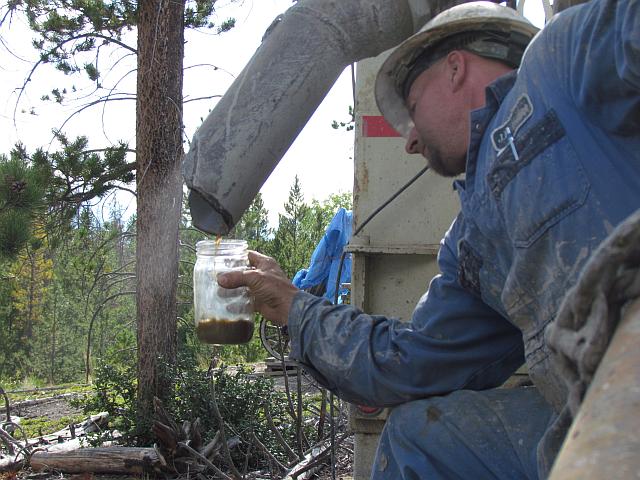
It was late. Jerry said he would leave everything in place and they would make a final decision in the morning.
And so another day dawned.
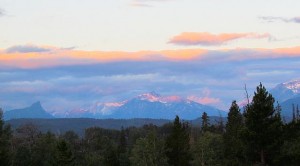
And there was actually about 200 gallons in the pipe! When you think about it, 1/4 of a gallon per minute will still give 360 gallons a day. When I haul water in a bucket, I usually use 3 gallons a day. Even with running water in the house I could not see me using much more than 15 gallons a day (I will not be having a flush toilet.) – This despite the fact that the average household in North America uses 500 gallons a day! What a lot of water is being wasted in the western world! Watering a future garden might take more, but I can always bring tankfuls from the river for that.
My sample had settled in the jar overnight, and the pendulum said it has no nasty chemicals in it. It will be impossible to tell for sure until the well is properly flushed out and samples are taken. I will not be able to do that until the pump installer comes and we run the pumps for a couple of days. And before that, I need to dig the trench to the house. (The whole thing is going to cost several thousand more dollars before I have finished.)
Drilling deeper might well produce more water. But it also might add undesirable elements. I will live quite happily with what is there. Although I have a free source of water at the Nimpo post office, and am very grateful for it, it will be wonderful to have my own in-house supply – always providing it does not dry up or change quality.
Although the well needed no casing through the soft ash rock, it still needed to be lined.
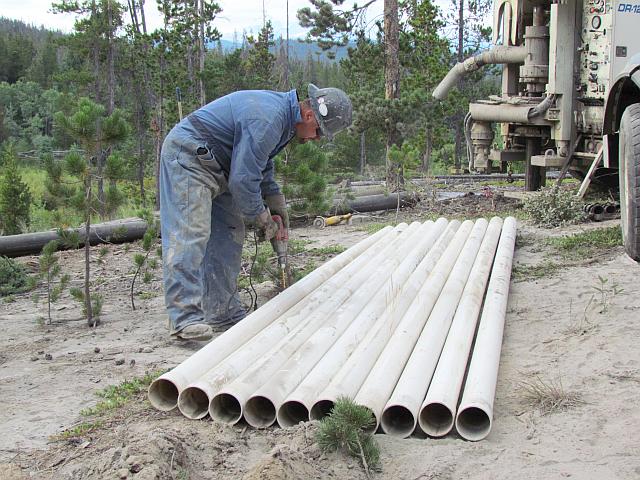
The bottom liner was tied to a rope, then, because it was so light, lifted by hand and lowered into the well. They slid down inside the casing and would come up part way through the lower casing.
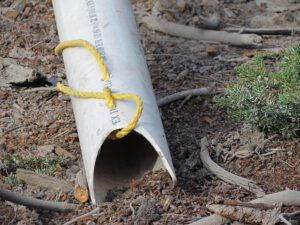
Finally, the top of the upper casing was cut off.
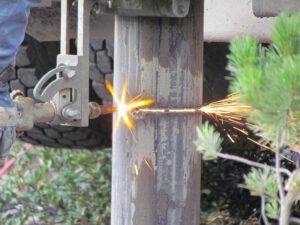
And Jerry and Dean packed up their equipment and drove off to the next place. Thank you, guys!
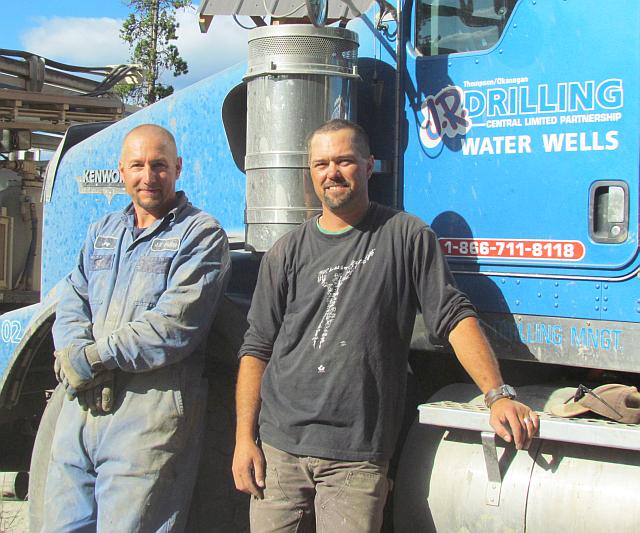
And they left me with my well – and a humungous mess of mud flowing down the hill. A cap has been welded on top to prevent anything crawling in, so I will not be able to look at the water again until the pump installer comes. I have contacted him – he is supposed to get back to me soon.
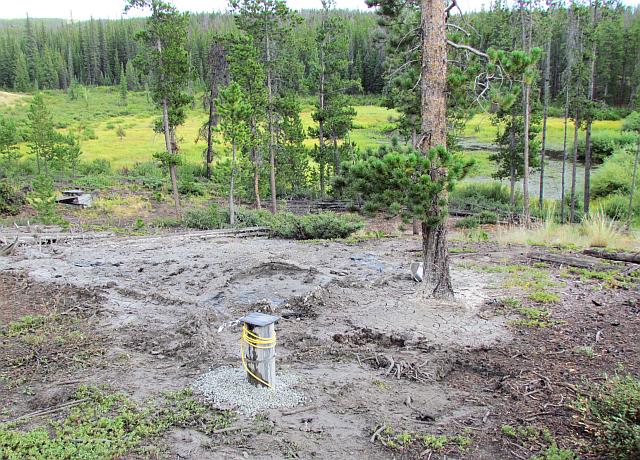

I have just read your entries about your adventures at “Ginty’s Creek” and thoroughly enjoyed the read. Your photographs are wonderful. You are fortunate to live in such a beautiful area.
Ginty was my teacher at Crescent Lake School about 1955. It was a one room school approximately thirty miles northwest of Prince George, B.C. In those days it was quite isolated and Ginty was a real breath of fresh air to our community. She told us all about her travels to and made the outside world more real. We also met her father, he came and spent part of the year with her.
I would like to purchase your book directly from you – should I send a money order or how would I go about this?
I look forward to hearing from you,
Siown
Bravo it takes a lot of conviction to start something like you did. As a Designer I see there are so many more “down to earth” ways in need of Design that not always looks like Design but still is. I love your photos nature photos especially from the Aspen tree leaves and the animals digging their way around them in such geometrical patterns. I will chase down some Aspen trees in Vancouver if any.
Congratulations! If I had been there I could have stood on my head until my legs started being pulled down! Looks like you managed without me though.